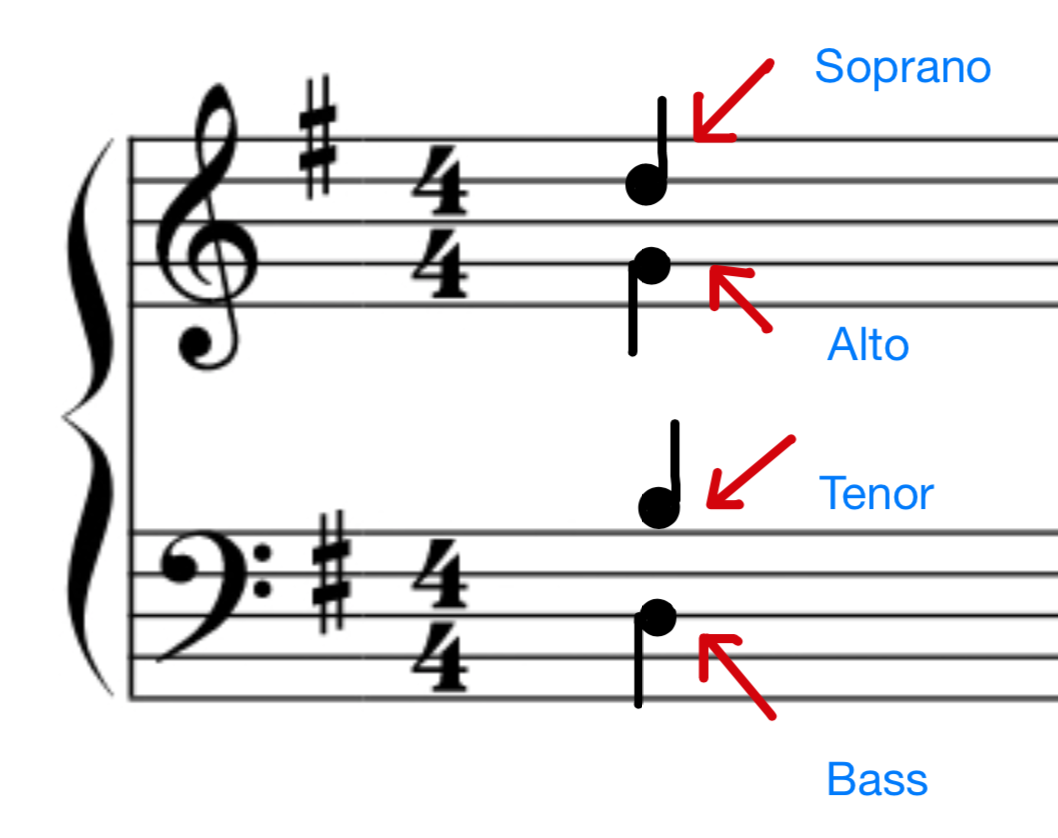Mickey Hansen
AP Music Theory 🎶
72 resourcesSee Units
1.8: Rhythmic Patterns
Once you become acquainted with reading music, you will start to recognize common rhythmical patterns and be able to sight-sing with rhythmical accuracy.
For example, dotted rhythms are quite common:

Or these dotted rhythms in a triple compound meter:

Notating rhythm...
Part of the AP Music Theory test will require you to notate music on the staff.🎼 There are a few rules we ought to adhere to in order to make our notation visually pleasing (and correct!). More than anything, this is to help our brain 🧠 organize the music we see.
1. All single notes with a single stem starting on the third space of the staff and higher require their stem to be down. All notes starting on the second space or below require an upward stem. Any notes on the middle line can either be up or down.
2. When indicating choral parts, such as in <hyperlink to Unit X> soprano and tenor note stems are always up, and alto and bass stems are always down, no matter where located on the staff. Jump to < hyper link to Unit X> for more detail.

3. When notating rhythm, take care to beam the notes within one beat together. This helps the brain locate where each beat is, so the musician can keep a steady meter. Any notes, rests, ties, or beams that distort the beat structure is very difficult for a performer to read, and is considered wrong.

4. Noteheads are placed to the left of the stem when the stems are going up. Noteheads are placed to the right when the stems are going down.
5. Accidentals remain in place when tied across a bar line.
6. In musical styles such as jazz, rock, or country, the composition might require the performer to "swing" the 8th note divisions of a quarter note. This means that the offbeat note will be played a bit later than it normally would when played "straight".

🦜 Polly wants a progress tracker: What type of meter is a composition that is in 12/16 time? How about 2/4?
Browse Study Guides By Unit
🎵Unit 1 – Music Fundamentals I (Pitch, Major Scales and Key Signatures, Rhythm, Meter, and Expressive Elements)
🎶Unit 2 – Music Fundamentals II (Minor Scales and Key Signatures, Melody, Timbre, and Texture)
🎻Unit 3 – Music Fundamentals III (Triads and Seventh Chords)
🎹Unit 4 – Harmony and Voice Leading I (Chord Function, Cadence, and Phrase)
🎸Unit 5: Harmony and Voice Leading II: Chord Progressions and Predominant Function
🎤Unit 7 – Harmony and Voice Leading IV (Secondary Function)
📝Exam Skills
📆Big Reviews: Finals & Exam Prep

Fiveable
Resources
© 2023 Fiveable Inc. All rights reserved.